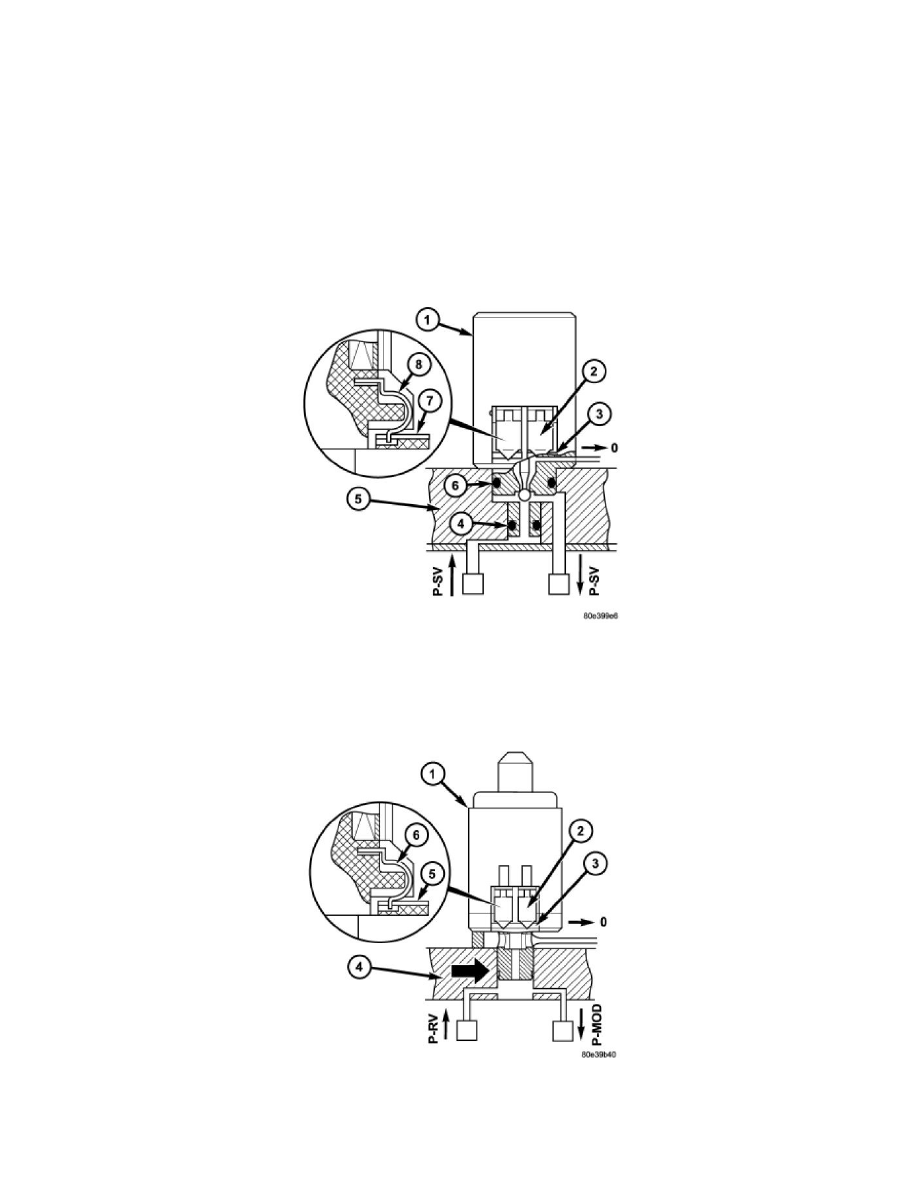Charger V8-5.7L VIN H (2007)

Torque Converter Clutch Solenoid: Description and Operation
Operation
OPERATION
The solenoids are feed a 12-volt source from the TCM (Transmission Control Module). When an electrical current is applied to the solenoid coil, a
magnetic field is created which produces an attraction to the plunger, causing the plunger to move and work against the spring pressure and the load
applied by the fluid the valve is controlling. The plunger is normally directly attached to the valve which it is to operate. When the current is removed
from the coil, the attraction is removed and the plunger will return to its original position due to spring pressure.
The plunger is made of a conductive material and accomplishes this movement by providing a path for the magnetic field to flow. By keeping the air gap
between the plunger and the coil to the minimum necessary to allow free movement of the plunger, the magnetic field is maximized.
UPSHIFT/DOWNSHIFT SOLENOID VALVES
If a solenoid valve (1) is actuated by the TCM, it opens and guides the control pressure (p-SV) to the assigned command valve. The solenoid valve
remains actuated and therefore open until the shifting process is complete. The shift pressure (p-SV) to the command valve is reduced to zero as soon as
the power supply to the solenoid valve is interrupted.
MODULATING PRESSURE CONTROL SOLENOID VALVE
The modulating pressure regulating solenoid valve (1) assigns a proportional pressure to the current which is controlled by the TCM according to the
load.
TORQUE CONVERTER LOCKUP CLUTCH PWM SOLENOID VALVE
